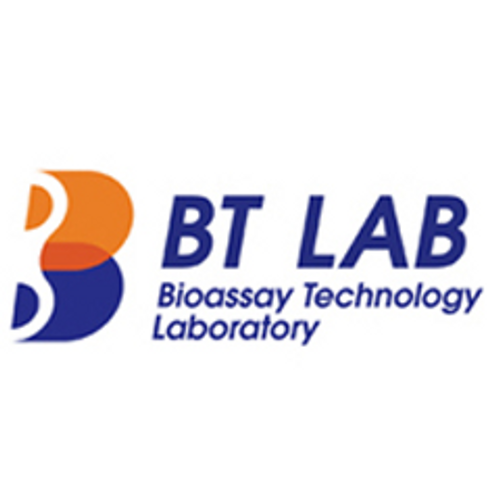Product Description
Human Actin, cytoplasmic 2 (ACTG1) ELISA Kit | AE23609HU | Abebio
Species Reactivity: Human (Homo sapiens)
Abbreviation: ACTG1
Alternative Name: ACT; ACTG; DFNA20; DFNA26; actin; cytoplasmic 2|actin; gamma 1 propeptide|cytoskeletal gamma-actin
Application: ELISA
Range: 25-1600 pg/mL
Sensitivity: 6.25 pg/mL
Intra-Assay: ≤5.1%
Inter-Assay: ≤9.9%
Recovery: 0, 98
Sample Type: Serum, Plasma, Other biological fluids
Detection Method: Sandwich
Analysis Method : Quantitive
Test Principale: This assay employs a two-site sandwich ELISA to quantitate ACTG1 in samples. An antibody specific for ACTG1 has been pre-coated onto a microplate. Standards and samples are pipetted into the wells and anyACTG1 present is bound by the immobilized antibody. After removing any unbound substances, a biotin-conjugated antibody specific for ACTG1 is added to the wells. After washing, Streptavidin conjugated Horseradish Peroxidase (HRP) is added to the wells. Following a wash to remove any unbound avidin-enzyme reagent, a substrate solution is added to the wells and color develops in proportion to the amount of ACTG1 bound in the initial step. The color development is stopped and the intensity of the color is measured.
Product Overview: Actins are highly conserved proteins that are involved in various types of cell motility, and maintenance of the cytoskeleton. In vertebrates, three main groups of actin isoforms, alpha, beta and gamma have been identified. Actin, gamma 1, encoded by this gene, is a cytoplasmic actin found in nonmuscle cells.Defects in ACTG1 are the cause of non-syndromic sensorineural deafness autosomal dominant type 20 (DFNA20) ; also called autosomal dominant deafness type 26 (DFNA26) . DFNA20 is a form of sensorineural hearing loss. Sensorineural deafness results from damage to the neural receptors of the inner ear, the nerve pathways to the brain, or the area of the brain that receives sound information.
Stability: The stability of ELISA kit is determined by the loss rate of activity. The loss rate of this kit is less than 5% within the expiration date under appropriate storage condition. The loss rate was determined by accelerated thermal degradation test. Keep the kit at 37°C for 4 and 7 days, and compare O.D.values of the kit kept at 37°C with that of at recommended temperature. (referring from China Biological Products Standard, which was calculated by the Arrhenius equation. For ELISA kit, 4 days storage at 37°C can be considered as 6 months at 2 - 8°C, which means 7 days at 37°C equaling 12 months at 2 - 8°C) .
 Euro
Euro
 USD
USD
 British Pound
British Pound
 NULL
NULL








